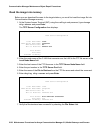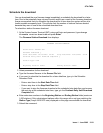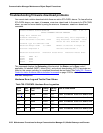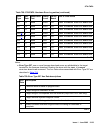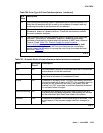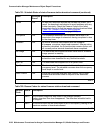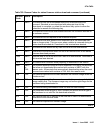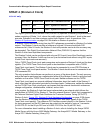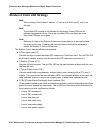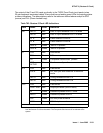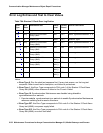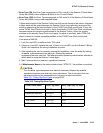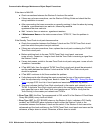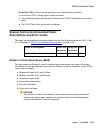
Communication Manager Maintenance-Object Repair Procedures
2128 Maintenance Procedures for Avaya Communication Manager 3.0, Media Gateways and Servers
STRAT-3 (Stratum-3 Clock)
S8700 MC only
The Digital Synchronization Network Plan (PUB 60110) specifies a hierarchy of synchronization
nodes consisting of Strata 1 to 4, where the public network’s sole Stratum-1 clock is the most
accurate. Release 5r and later systems support both Stratum-3 and -4 operations. See
Stratum-4 Synchronization
on page 2146 for details on Stratum-4 operation.
A Stratum-3 clock derives its timing from two DS1 references connected to a Stratum-3 or better
source. The Stratum-3 clock provides a holdover of at least 24 hours should both DS1
references fail. (After 24 hours, the Stratum-3 clock still provides service but its accuracy may
be degraded). The Digital Synchronization Network Plan (PUB 60110) requires that the
Stratum-3 clock have duplicated components.
The Stratum-3 clock can be configured with only one DS1 input if one of the Clock Input cards is
removed. Also, the Stratum-3 clock can free run (use its internal clock without using DS1 inputs,
if both Clock Input cards are removed).
Only a TN780 Tone-Clock circuit pack recognizes and supports a Stratum-3 clock and its alarm
signals. (The TN780 Tone-Clock circuit pack is also backward- compatible with a TN768
Tone-Clock circuit pack.) The Stratum-3 clock may be connected to a non IPSI PN where a
TN780 Tone-Clock circuit pack resides. The Stratum-3 clock should never be connected to an
IPSI connected PN.
The only operation that software can perform is a query of the alarm leads. The only recovery
action that can be performed on a catastrophic failure of the Stratum-3 clock is using the local
oscillator on the active TN780 Tone-Clock circuit pack. Neither software nor the TN780
Tone-Clock circuit pack can request additional information about the health of the Stratum-3
clock other than the information provided by the alarm leads. Furthermore, neither the software
nor the TN780 Tone-Clock circuit pack can request that the external clock switch references,
change configuration, disable/enable, initialize, and so forth.
In the system, the Stratum-3 clock has been implemented as an external which follows the
specification in PUB 60110 for Stratum 3. The only external Stratum-3 clock that is supported is
the Telecom Solutions Digital Clock Distributor for Customer Premise Timing (DCD-CPT)
Stratum-3 clock. Figure 122: Stratum-3 Clock Hardware Configuration
on page 2129 shows
how the Stratum-3 hardware configuration provides clock and alarm signals to the TN780
Tone-Clock circuit pack(s). The reference DS1 facilities connect directly to the Stratum-3 clock
for timing purposes, but the DS1 data may be routed into the switch by using a Y connector
(H-600-274 G1 for the 50-pin DS1 end or H-600-274 G2 for the 15-pin DS1 end).
For more information about installing a Stratum-3 clock, refer to Installing the Avaya S8700
Media Server with the Avaya G600 Media Gateway, the Avaya MCC1 Media Gateway, or the
Avaya SCC1 Media Gateway (Library CD).
MO Name Alarm Level Initial SAT Command to Run Full Name of MO
STRAT-3 MAJ test synchronization Stratum-3 clock
STRAT-3 MIN test synchronization Stratum-3 Clock



